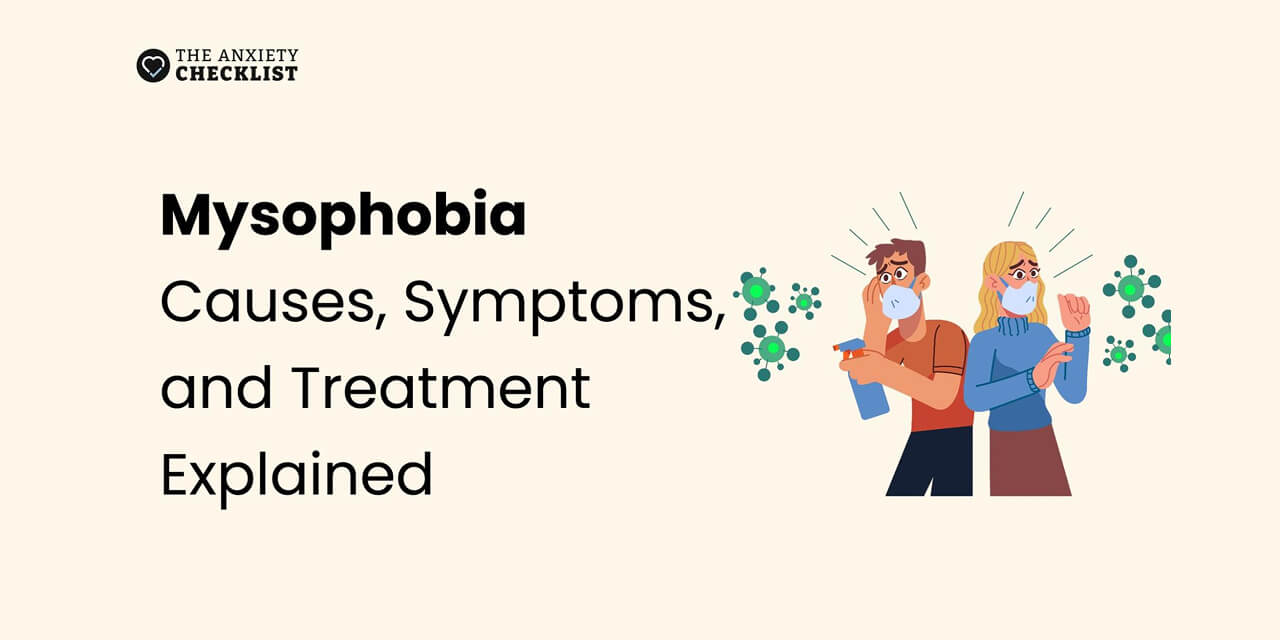We're all conscious about keeping ourselves and our surroundings clean and germ-free. After all, we know that germs and contamination can make us sick and even be infectious.
This is undoubtedly a healthy habit, but for people with mysophobia or germophobia, this everyday concern can trigger intense fear and discomfort, often to the point where it starts affecting their daily lives.
A study involving 520 college students found that 45.4% experienced fear related to germ-contaminated situations.
Even with such significant numbers, this condition is often misunderstood and overlooked. In this post, we'll explore mysophobia in detail, including its causes, symptoms, diagnosis, and ways to manage it.
What Is Mysophobia?
The term 'mysophobia' comes from the Greek words 'mysos', meaning uncleanness, and 'phobos', meaning fear.
Mysophobia or germophobia, is an intense, persistent, and irrational fear of germs, dirt, or contamination. Unlike a simple preference for hygiene, mysophobia is rooted in anxiety.
A person with this type of phobia may understand that their fear is excessive. However, they’ll still feel unable to control it. This loss of control is what separates mysophobia from ordinary fear.
Here's a simple explanation of the difference between phobia and fear.
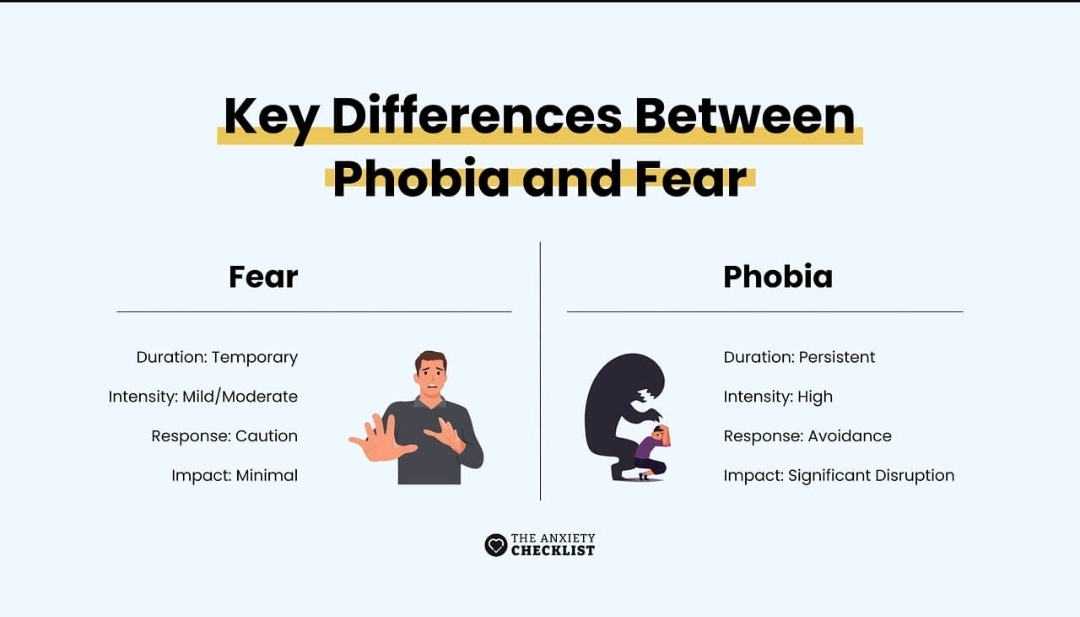
The Psychological Behind Mysophobia (Germophobia)
From a psychological point of view, mysophobia is often linked to obsessive-compulsive disorder (OCD) and other anxiety disorders.
The brain’s threat system becomes overly sensitive to dirt, making it difficult to distinguish between imagined and actual danger posed. This triggers panic attack or extreme fear, followed by a need to take immediate action, such as excessive cleaning or escaping the situation.
Mysophobia isn’t about a dislike of dirt but is related to the deep emotional trauma that dirt or germs represent. For the person affected, germs symbolize danger, loss of control, or vulnerability.
The person feels short-term relief after cleaning or avoiding the feared object, but the fear returns whenever they face a similar situation. This cycle reinforces the phobia and makes it harder to manage without help.
Is anxiety holding you back from the life you deserve?
Common Causes of Mysophobia
Mysophobia can develop due to different factors, such as genetic, environmental, psychological, and social influences. Understanding these factors can help you identify triggers and manage symptoms more effectively.
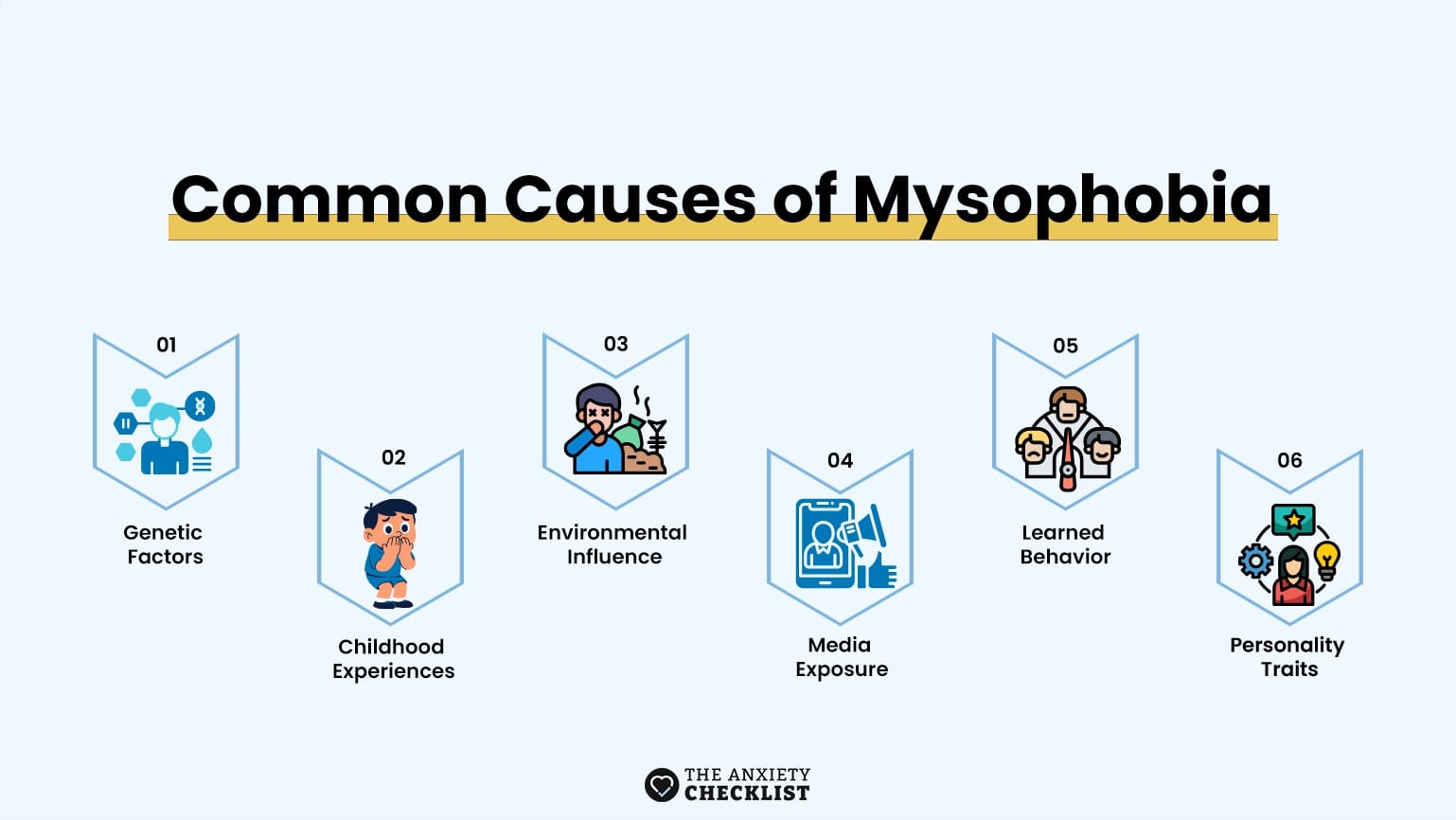
Genetic Factors
Sometimes, mysophobia or germophobia can run in families. People who have a family history of panic disorder, phobias, or other mental disorders are likely to develop germophobia.
It’s important to remember that this doesn’t mean they’re guaranteed to have it. It only means they may have a natural sensitivity to fear or stress, making them more vulnerable to developing specific anxieties.
Childhood Experiences
Early life experiences can shape how people respond to germs later in life. A child who grows up in a household where cleanliness is strictly enforced may start to believe that germs are extremely dangerous.
Constant reminders about getting sick or even experiencing a serious illness can stick with someone, causing them to have fears.
Also, children tend to copy how parents or caregivers react to dirt or germs. These early experiences can make a person extra careful, to the point where it becomes hard to manage in adulthood.
Environmental Influences
Our environment can shape our views on hygiene. Many societies emphasize cleanliness and safety to prevent illness, which is a good thing. However, it can sometimes lead to excessive fear of germs.
For example, during the COVID-19 pandemic, people were reminded to wash their hands, sanitize surfaces, and avoid contact. Such practices can help to prevent illness, but some people still feel extreme fear even after the risk has decreased.
Media Exposure
News stories, documentaries, and social media share information on outbreaks and infections. However, how these stories are emphasized can intensify the fear of germs.
This information can help people stay informed, but constant exposure to alarming headlines can cause distress. People may end up feeling more distress than the situation actually warrants.
Personality Trait
Certain personality traits can increase one’s likelihood of developing mysophobia. People who are naturally anxious, cautious, or perfectionistic may be more likely to worry about germs. Since they tend to seek control over their environment, they may develop strict hygiene routines to feel safe.
Common Symptoms of Mysophobia
The symptoms of mysophobia can appear in many ways and often interfere with daily life. Just like other types of phobias, mysophobia also manifests in physical, psychological, and behavioral symptoms.
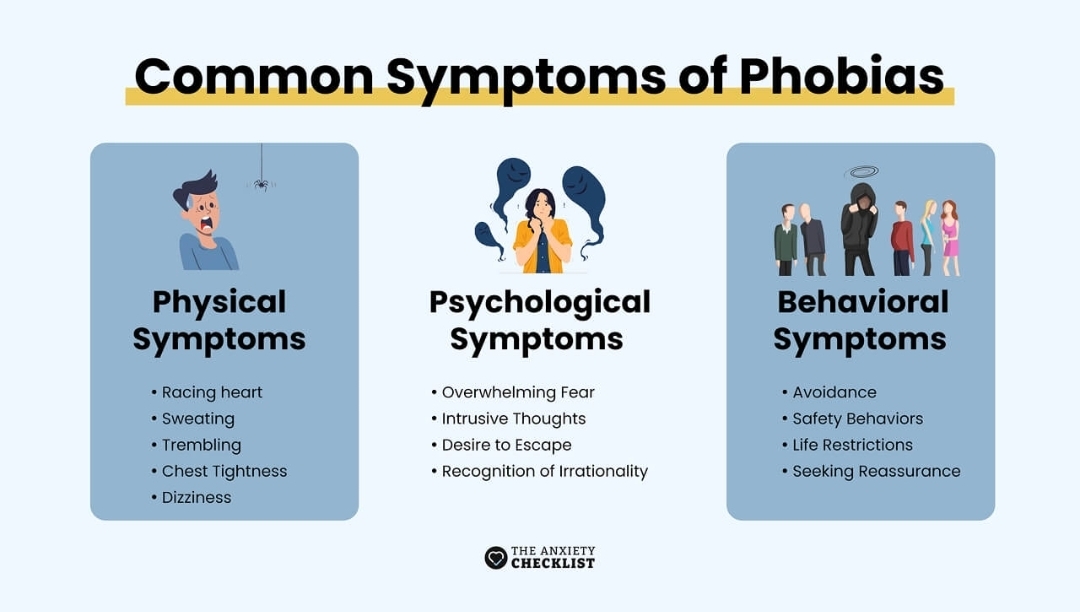
In this section, we’ll discuss the common symptoms that someone with mysophobia may experience.
Physical Symptoms
The body reacts to fear, and mysophobia isn’t an exception. When a person with mysophobia encounters something they believe is dirty or contaminated, their body enters a state of alarm.
Common physical symptoms include:
Behavioral Symptoms
Mysophobia also impacts behavior significantly. Many people with this condition develop strict cleaning habits to feel safe.
Examples of behavioral symptoms include:
Psychological Symptoms
Mysophobia affects how a person thinks. The fear of germs can lead to irrational beliefs and obsessive thoughts about contamination.
Some common thinking patterns include:
Social and Lifestyle Symptoms
Mysophobia can affect a person’s social and daily life. Because of their fear, individuals may limit physical contact with others, avoid gatherings, or stop going out altogether.
They may feel embarrassed about their habits or worry that others will not understand. This isolation can lead to loneliness and emotional distress.
Daily routines can also become difficult. Simple tasks like grocery shopping, commuting, or using public restrooms can take much longer due to constant cleaning or avoidance.
How Mysophobia Is Diagnosed
Diagnosing germophobia or mysophobia requires a careful and detailed evaluation by a mental health professional. The process usually involves an assessment to determine whether it’s a phobia rather than just a fear and how severe it is.
Clinical Assessment
A psychologist or psychiatrist will talk to the person about their thoughts, emotions, and behaviors related to germs or contamination. This helps the professional understand the person’s experiences and concerns more deeply.
They may ask questions like:
Psychological Evaluation
Mental health professionals often use standardized questionnaires and anxiety tests to evaluate the severity of mysophobia. These tools measure anxiety levels, obsessive thoughts, and avoidance behaviors.
Common assessments for phobias and related anxiety conditions include structured clinical interviews, such as the SCID-5 or ADIS-5, along with phobia-specific questionnaires or fear survey checklists.
Medical Evaluation
In some cases, a medical examination may also be recommended. This is done to rule out physical health issues that could worsen anxiety or mimic the symptoms of mysophobia.
Conditions like thyroid problems, hormonal changes, or neurological disorders can sometimes cause symptoms of anxiety.
Behavioral Observation
Observing a person’s behavior is another important aspect of diagnosing mysophobia. Professionals may observe the person to see their reactions to situations involving germs.
For example, they may observe the individual’s handwashing habits, avoidance of public surfaces, or behavior in crowded spaces.
Differential Diagnosis
Mysophobia often shares symptoms with other disorders. This is where differential diagnosis comes in. Professionals can compare symptoms to rule out other anxiety disorders.
They can check whether the fear is limited to germs or is part of a broader anxiety pattern. This way, professionals can ensure that the person receives treatment specific to mysophobia or germophobia.
Treatment Options to Overcome Mysophobia
Mysophobia can interfere with daily life, which is why seeking help is necessary to manage symptoms. Here are several methods for managing germophobia.
Cognitive Behavioral Therapy (CBT)
One of the treatments for mysophobia is cognitive behavioral therapy (CBT). It involves guiding affected individuals to identify and replace negative thought patterns or anxiety triggers related to germophobia with more realistic and balanced thinking.
A key part of CBT is exposure exercises. This involves exposing individuals to situations related to germs but in a safe and controlled way.
CBT also involves teaching behavioral strategies to help individuals build skills and confidence to reduce compulsive behaviors. Here’s a quick look at the stages of using CBT for anxiety management.
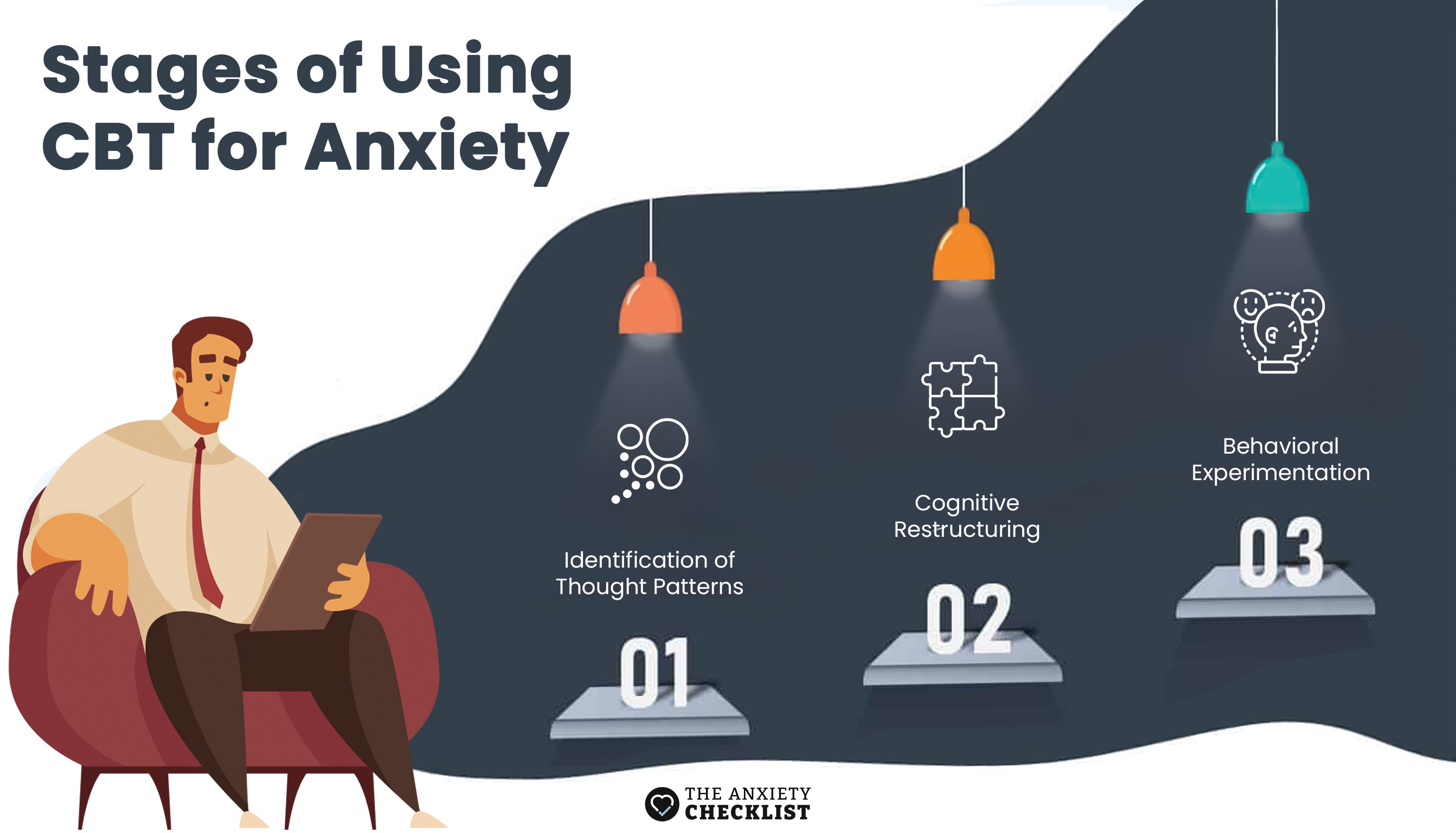
Medication
When the anxiety caused by mysophobia becomes severe, medication can help. Anti-anxiety drugs or antidepressants can help reduce the intensity of panic attacks and obsessive thoughts linked to germophobia.
Medication may work best when combined with therapy. It doesn’t cure mysophobia on its own, but it makes it easier for the person to engage in therapy treatments.
Relaxation and Stress Management Techniques
Several relaxation techniques can help reduce anxiety symptoms associated with mysophobia. Methods like meditation, deep breathing exercises, and other grounding techniques can calm the mind when the fear of germs arises.
Practicing these techniques regularly helps people with germophobia respond more calmly to situations that trigger their anxiety.
Many people also find coping cards helpful. These cards contain reminders of calming strategies or positive affirmations you can use whenever you get anxious due to germophobia.
Support Groups and Counseling
This method involves providing a safe space for people with mysophobia or germophobia to share their experiences. Talking to others who understand the fear of germs can help reduce feelings of isolation.
Group counseling or one-on-one therapy sessions can help people develop coping strategies and gain encouragement from peers.
Lifestyle Changes
Lifestyle adjustments can complement other treatments for mysophobia. This involves maintaining a balanced diet, exercising regularly, and getting enough sleep to reduce anxiety levels.
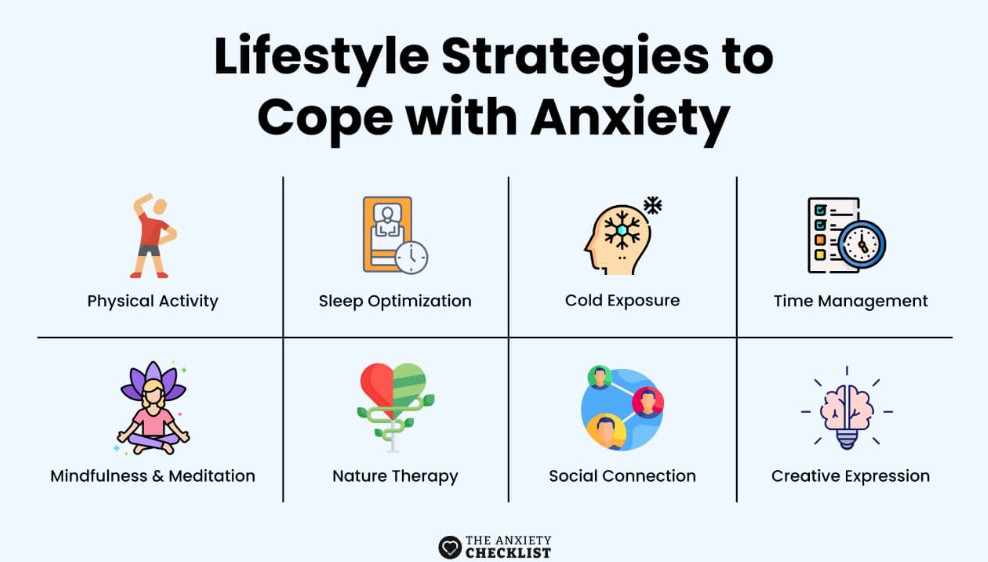
Also, limiting exposure to news or social media content that exaggerates contamination risks can help manage germophobia.
Frequently Asked Questions
Conclusion

Advertisement
BetterHelp
BetterHelp makes starting therapy easy. Get a tailored therapist match based on your needs and preferences - in as little as 24 hours!
Enjoy 20% off your first month with code "anxietycheck"

4 million+ Helped
Access Therapy 24/7
Preferred by 94% of users
If you are in a crisis or any other person may be in danger - don't use this site. These resources can provide you with immediate help.


